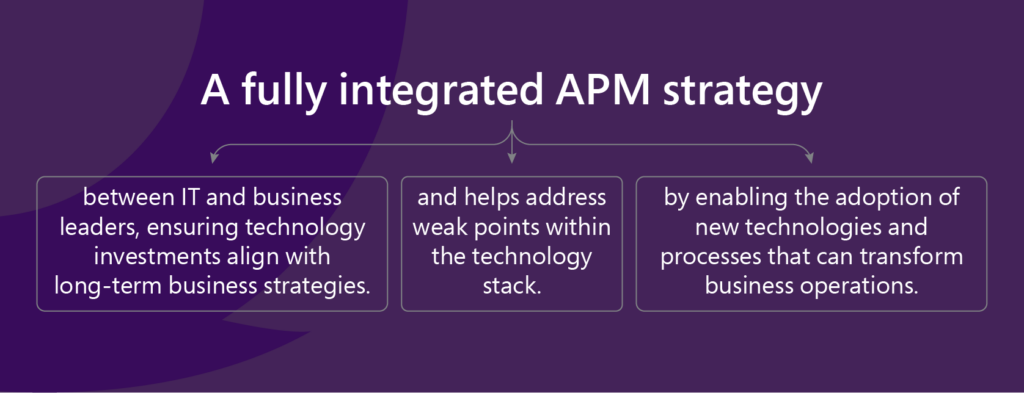Accelerate IT operations with AI-driven Automation
Automation in IT operations enable agility, resilience, and operational excellence, paving the way for organizations to adapt swiftly to changing environments, deliver superior services, and achieve sustainable success in today's dynamic digital landscape.
Driving Innovation with Next-gen Application Management
Next-generation application management fueled by AIOps is revolutionizing how organizations monitor performance, modernize applications, and manage the entire application lifecycle.
AI-powered Analytics: Transforming Data into Actionable Insights
AIOps and analytics foster a culture of continuous improvement by providing organizations with actionable intelligence to optimize workflows, enhance service quality, and align IT operations with business goals.
“Did you know? According to Adenza, the use of CATT can decrease test execution times by up to 70%”
Did you know that 45% of IT budgets are dedicated to application maintenance and legacy systems? Yet only a fraction of these applications aligns with strategic business goals.
In an era where businesses are investing heavily in digital transformation, Application Portfolio Management (APM) emerges as a strategic framework that helps organizations optimize their IT investments by aligning their technology portfolio with business objectives. It not only includes the planning for acquiring new applications but also ensures the timely retirement of outdated ones, reducing costs and risks.
Failing to implement APM effectively could lead to increased operational costs, security vulnerabilities, and misaligned technology investments—directly impacting your bottom line. This is where businesses must take action, with some already leveraging APM to increase agility, improve cost-efficiency, and ensure alignment between technology and strategic goals.
In this blog, we’ll explore the top elements of APM and how it drives real business value, helping companies achieve better outcomes.
Key Elements of Application Portfolio Management (APM)
Understanding the essential elements of APM and their contributions to business success can transform how organizations approach technology investments. Here are the five key components that drive organizational value through effective APM.
1. Aligning Applications with Business Goals
A critical first step in Application Portfolio Management is alignment with business objectives. According to research, nearly 75% of IT leaders feel their technology investments are not well aligned with business goals, which can lead to inefficiencies. Start by identifying and understanding the full scope of your technology assets, including those acquired through shadow IT or used by only a few individuals.
Evaluating the impact of each application on operational efficiency, customer satisfaction, and revenue growth helps prioritize applications for investment, retirement, or upgrades. By aligning your portfolio with business objectives, IT departments can focus on technologies that deliver genuine value, leading to higher returns on investment and improved operational performance.
2. Cost Management and Optimization
Effective cost management is another pillar of successful APM. The average organization spends $15 million annually maintaining outdated or underperforming applications. By actively managing your application portfolio, you can eliminate redundancies, minimize overhead, and reinvest savings into more critical areas.
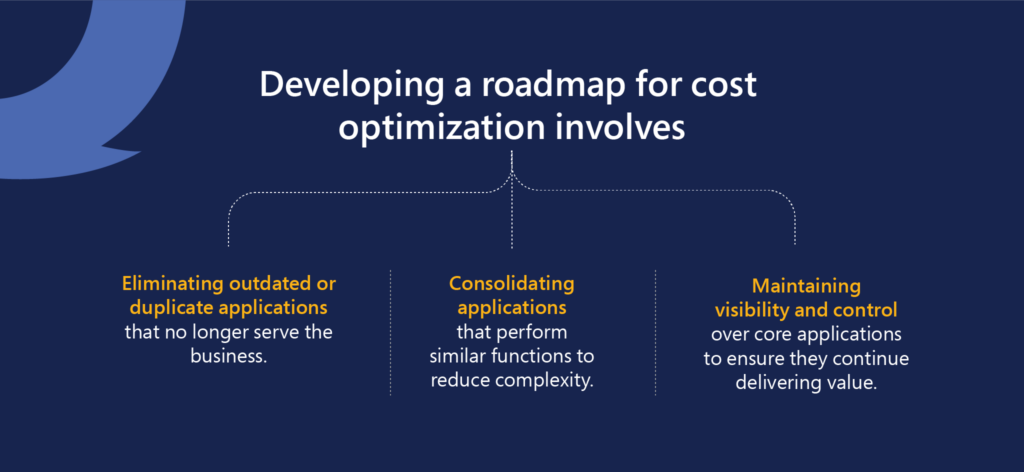
These measures not only reduce costs but also enhance the organization’s agility by making it easier to adopt new technologies or scale existing solutions.
3. Risk Mitigation
In today’s increasingly connected world, cyber threats are more prevalent than ever. According to a Data Breach report, the average cost of a data breach is $4.45 million, with a significant portion attributed to outdated and unsecure applications. APM plays a critical role in identifying and managing risks related to security, compliance, and performance, thereby preventing costly disruptions.

By actively managing risks within the portfolio, organizations can protect their reputation and build trust with stakeholders.
4. Data-Driven Decision Making
Data is at the heart of modern business strategy, yet many companies fail to leverage it effectively for decision-making. In fact, 44% of executives admit that they do not trust their organization’s data, which hinders their ability to make informed choices. APM tools offer robust data models that help organizations make more precise, data-driven decisions about their technology investments.
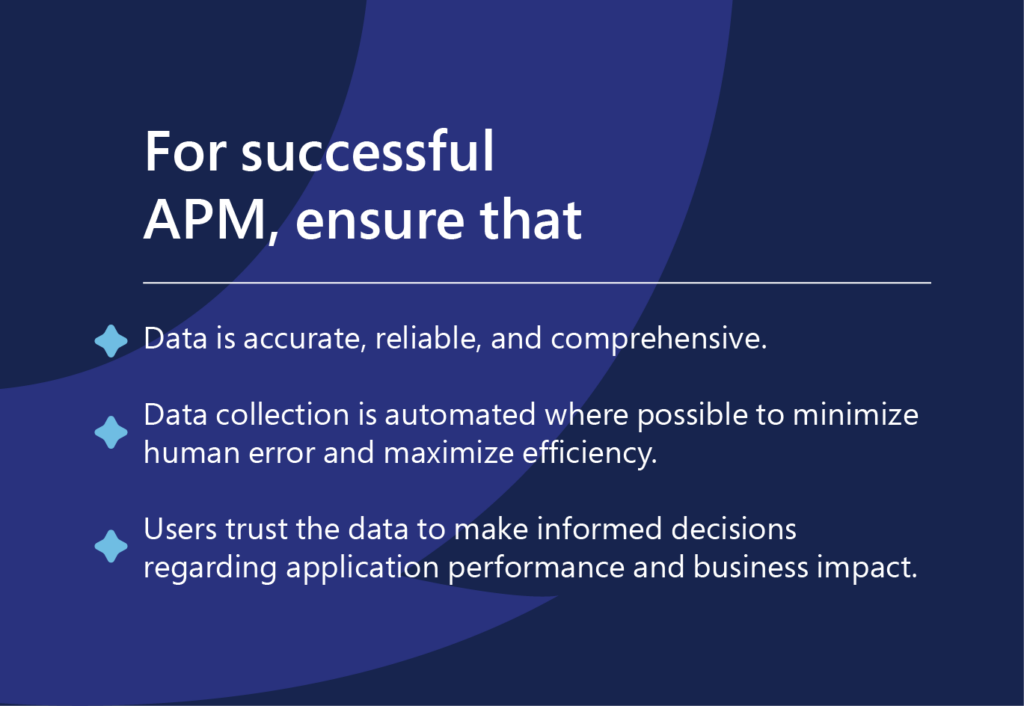
By analyzing usage patterns, business value, and application performance, APM enables organizations to align technology investments with actual needs, driving measurable returns.
5. Maximizing Business Value Through APM
Application Portfolio Management isn’t just about maintaining a collection of applications; it’s about maximizing the value they provide to the business. 87% of companies report that they struggle with optimizing their digital portfolios to align with business needs. Application observability offers a solution by providing visibility into application performance in real-time for identifying areas for improvement.
By understanding the assets, they have and how those assets contribute to current and future business priorities, organizations can unlock new opportunities for growth and innovation.
Understanding the Total Economic Impact™ Study
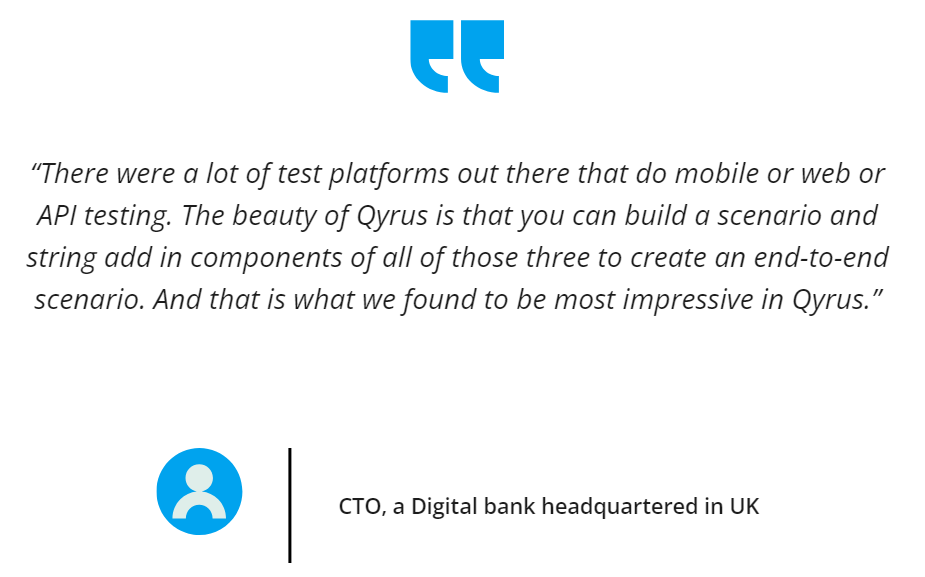
Key Findings from the TEI of Qyrus Study: A Closer Look
Key Findings from the TEI of Qyrus Study: A Closer Look
Forrester’s TEI framework can help organizations evaluate the impact of a testing solution like Qyrus by examining four key areas: cost, benefit, flexibility, and risk. This end-to-end approach ensures that all potential impacts are considered, providing a clear picture of the return on investment.
- Cost: Implementing an advanced testing platform incurs costs, including licensing, integration, and ongoing management. However, the time savings and efficiency gains achieved through automation can offset these costs. For example, the reduction in manual testing efforts and the streamlined reporting process can lead to significant productivity gains. With average fully burdened hourly rates for software developers and QA testers at $55 and $36 respectively, these efficiencies translate into substantial cost savings.
- Benefit: The primary benefit of a solution like Qyrus is its ability to maintain high quality and reliability in software products. By reducing defects and minimizing incidents, organizations can improve product stability and customer satisfaction. The TEI report showed that Qyrus reduced defects and incidents by up to 80%, highlighting its effectiveness in delivering high-quality outcomes.
- Flexibility: A flexible testing platform is crucial for adapting to changing business needs. As organizations scale or shift their focus, the ability to quickly adapt testing processes is vital. Qyrus provides this flexibility, allowing companies to tailor their testing approaches to meet specific requirements without sacrificing efficiency or quality.
- Risk: Every investment comes with risk, but advanced testing platforms help mitigate these risks by identifying potential issues early. By catching problems before they reach production, Qyrus helps prevent costly downtime and protects the organization’s reputation. The time savings in incident fixes, as highlighted in the TEI report, further emphasize how proactive issue detection can lead to fewer disruptions and more stable operations.
- Cost Avoidance from Reduced Downtime: Qyrus’s AI-driven detection capabilities prevent 50% of incidents from entering production, leading to cost savings of $557,000 by avoiding downtime.
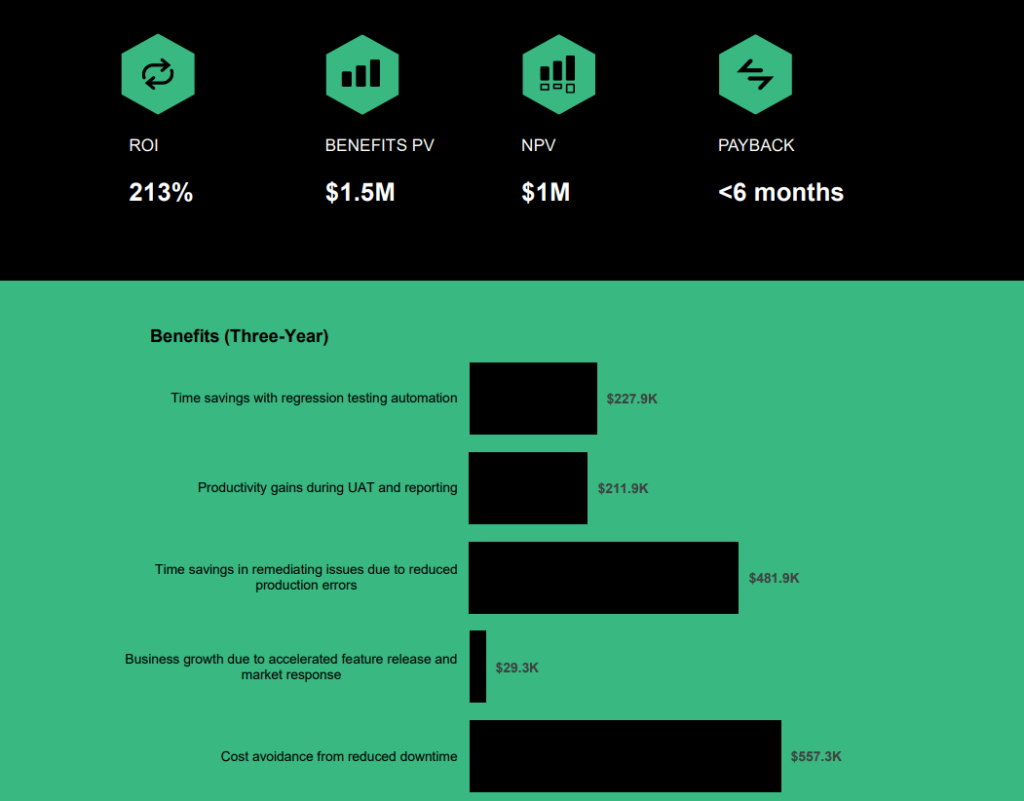
The Strategic Advantage of Qyrus
Qyrus exemplifies how an advanced testing platform can transform an organization’s approach to software development. The TEI report on Qyrus highlighted several areas of impact:
- Facilitating Growth and Innovation: By optimizing testing processes, Qyrus frees up resources that can be redirected towards innovation. This is crucial for organizations looking to stay competitive and capitalize on new opportunities. The ability to quickly and efficiently bring new features to market allows businesses to respond to customer needs and industry trends, driving growth and long-term success.
- Improved Business Growth and Market Response: Qyrus contributes to broader business objectives, particularly in terms of growth and market agility. Faster time-to-market capabilities allow organizations to be more responsive to market trends and customer feedback, providing a significant competitive advantage. Consistently delivering high-quality products and responding swiftly to customer needs enhances customer satisfaction and loyalty, driving revenue growth and opening new revenue streams.
The Bottom Line:
The complexity of today’s digital ecosystems means that effective Application Portfolio Management is more crucial than ever. Without it, organizations risk overspending on outdated technologies, missing opportunities for innovation, and exposing themselves to security risks. By aligning your application portfolio with business goals, managing costs, mitigating risks, and leveraging data for decision-making, APM can transform your IT investments into strategic assets that drive real business value.
For companies undergoing digital transformation or restructuring their business architectures, APM provides the clarity needed to make smarter, faster decisions. Organizations that embrace APM will be better positioned to thrive in an increasingly digital world, where agility, efficiency, and innovation are key differentiators.
At Quinnox, we understand the intricacies of APM, and the unique challenges faced by organizations in today’s digital landscape. With our comprehensive solutions, your business can transform its application portfolio, achieving improved agility, better risk management, and greater operational efficiency. Don’t let your technology investments go to waste—leverage APM to future-proof your business and achieve lasting success.
Connect with our experts today!
